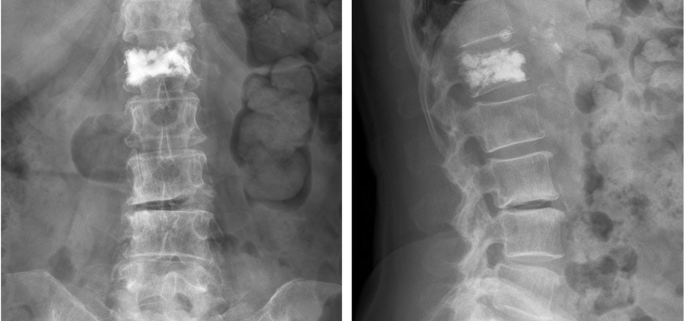
Vertebroplasty
Overview
Vertebroplasty is a minimally invasive surgical procedure designed to alleviate the intense pain in patients suffering from a vertebral compression fracture. This type of fracture often comes as a result of osteoporosis, tumor, or any type of traumatic injury. In this procedure, bone cement is injected into the fractured vertebra, stabilizing the fracture and significantly reducing pain.
Types
Although there isn’t a specific classification for vertebroplasty, it usually goes hand in hand with another procedure called kyphoplasty. While vertebroplasty involves injecting bone cement into a vertebral fracture, kyphoplasty includes an extra step. In kyphoplasty, a small balloon is first inserted and inflated to create a cavity, and then the bone cement is injected. Both procedures aim to deal with different aspects of vertebral fractures.
Causes
Vertebral fractures requiring vertebroplasty are usually caused by:
-
- Osteoporosis: a disease that weakens the bones, causing them to be brittle and at risk of breakage
-
- Tumors: cancerous and noncancerous tumors can erode vertebrae, causing their fracture
-
- Spinal trauma: accidents or falls can lead to vertebral fractures needing vertebroplasty
Symptoms
Common symptoms of vertebral fractures that may require vertebroplasty include:
-
- Severe and sudden back pain
-
- Pain that worsens when standing or walking
-
- Decreased height
-
- Spinal deformities such as kyphosis (a hunchback-like curvature)
Note: If you experience any of these symptoms, it’s important to seek medical help to prevent further complications.
Diagnosis
The process of diagnosing a vertebral fracture usually involves:
-
- Physical exam: Your doctor will check for tenderness over the spine and evaluate your range of motion.
-
- Imaging tests: These include X-rays to reveal the fractures, CT scans for detailed images, and MRI to evaluate damage to soft tissues and detect tumors.
Treatment Options
Depending on the severity of the fracture and the individual’s health status, treatment can range from conservative methods to surgical options such as vertebroplasty.
-
- Conservative Treatment: Includes pain medications, bed rest and wearing a brace.
-
- Vertebroplasty: This minimally invasive procedure stabilizes the fracture and provides significant pain relief.
-
- Kyphoplasty: Similar to vertebroplasty, but it additionally helps restore the height and shape of the fractured vertebrae.
Living With Vertebroplasty
Post-vertebroplasty, it is vital to adopt certain lifestyle changes to improve recovery and prevent future fractures.
-
- Physical Therapy: Regular exercises can improve mobility and strengthen your back muscles.
-
- Eat healthily: A diet rich in calcium and vitamin D keeps your bones strong.
-
- Medication Management: Regularly consume your prescribed medications and discuss any side effects with your doctor.
-
- Avoid high-risk activities: Activities that put excessive strain on your spine should be avoided to prevent future fractures.
When to Seek Help
If you experience severe, sudden back pain following a fall or injury, or chronic back pain that doesn’t improve, it’s crucial to consult a healthcare professional. Other red flags include loss of height, limited mobility, or a curved spine. Early detection and treatment can prevent further complications and improve the quality of life.
